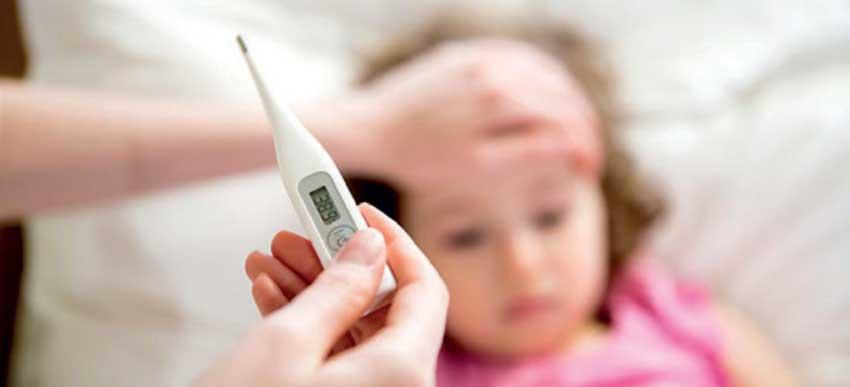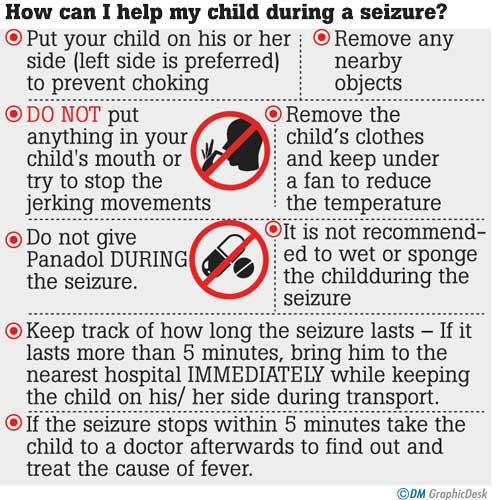Reply To:
Name - Reply Comment

 Febrile seizures or as its more commonly known a “Fever Fit” is a frightening sight for a mother to witness and they sometimes might feel helpless without being able to control such a situation; I still remember the fear and helplessness I felt when I saw my younger brother had a fit when we were small.
Febrile seizures or as its more commonly known a “Fever Fit” is a frightening sight for a mother to witness and they sometimes might feel helpless without being able to control such a situation; I still remember the fear and helplessness I felt when I saw my younger brother had a fit when we were small.
Let’s get to know what these febrile seizures really are, how they occur and what you should if your child gets it.
What are febrile seizures
Seizures or “Fits” occur due to abnormal electrical activity in the brain. They can make you pass out, or move strangely. “Febrile” means that the seizure is caused by high temperatures due to fever. Febrile seizures are quite common in infants and young children who have fevers greater than 38°C (100.4°F) and age between 6 months and 5 years. A family history of febrile seizures increases a child’s risk of febrile seizures
How to measure your child’s fever
If you feel your child has a fever, take his/ her temperature using a thermometer. Rectal temperatures are most accurate especially if the child is very young. Oral temperature can be measured in older children of about 4 or 5 years of age. Armpit temperature measurements can be inaccurate. It is important to use a good thermometer for the measurement.
Digital thermometers are what’s most commonly used these days. Carefully read the instructions that come with the thermometer when using and cleaning. Use different thermometers for rectal and oral temperature measurements if you want to take both.
For safety and to make sure the thermometer is placed properly and never leave your child unattended while you’re checking his/her temperature
Your child has a fever if he/she:
The most used and recommended medicine for treating fever in children in Sri Lanka is Paracetamol (Panadol). Be sure to give the correct weight- appropriate dose to your child without overdosing. The dose calculation can be done according to the instructions printed on the pack.
What are the symptoms of febrile seizure?
During a febrile seizure, the child usually passes out and has jerking movements of the arms, legs, or face. They may vomit or urinate during the convulsions. Most febrile seizures last less than five minutes. After a seizure, the child might be confused or sleepy for a short time.
What to expect after a febrile seizure?
Even though they may look scary, a normal febrile seizure doesn’t cause brain damage or affect the development and intelligence of the child. But prolonged seizures may be of a different cause and must be investigated by a doctor. Children who have one febrile seizure have a higher chance of having another, therefore treating a fever before it gets too high is very important. So talk to your doctor about how to treat the fever that your child might get in the future.